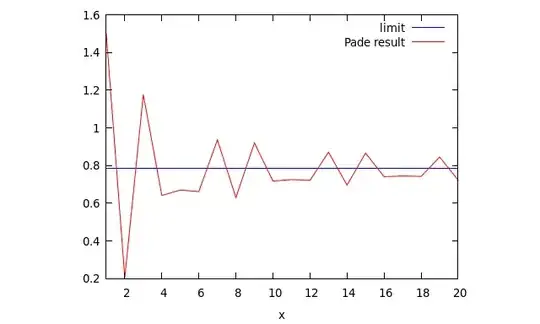It is well known that the Gaussian integral is $\sqrt \pi$, i.e., $$ \int_0^\infty e^{-x^2} dx = \frac{\sqrt \pi}2.$$ This is something we typically learn in calculus with polar coordinates. We also learn how to integrate $e^{-x^2}$ via power series, e.g., $$ \int_0^t e^{-x^2} dx = \sum_{n=0}^\infty (-1)^n \frac{t^{2n+1}}{(2n+1)n!}.$$ Hence one has $$ \frac{\sqrt \pi}2 = \lim_{t \to \infty} \left(\sum_{n=0}^\infty (-1)^n \frac{t^{2n+1}}{(2n+1)n!}\right).$$
Question: Is there a nicer way to rewrite the expression on the right, e.g. with "only one infinity" involved, to get an interesting expression/algorithm for computing $\pi$?
Of course the goal would be "pass the limit through the sum" but this is evidently non-trivial as the tail of the series explodes with $t$. My limited experience with analysis suggests one could try to split up the sum in various ranges ($n \ll t$, $n \approx t$, $n \gg t$) but that middle ranges could get hairy.
